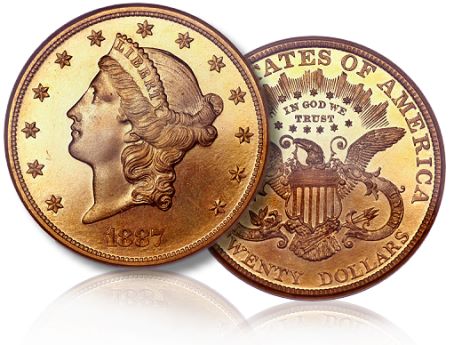Quality…high quality, this is the trend toward which the rare coin market is moving. In the long term scheme of things, over decades, as coin prices have moved higher, a lot higher, coin grading has become more critical than when prices were very low, like back in the 1950s and 1960s. As the inflationary 1970s came to be, rare coin prices rose quickly and dramatically. I know, I was there. Coin grading became much more important, because just a small variation in grade became a very large variation in value. ANACS, the American Numismatic Association Certification Service, began during the 1970s and quickly grew to become an important factor in third-party coin grading. It served to add an element of consumer protection to the market, helping hobbyists protect the values of the coins they purchased for serious money.
 Then, during 1986, the Professional Coin Grading Service was launched by a small group of dealers which added additional safety nets to the rare coin market and greatly helped protect the values of rare coins. PCGS introduced the encapsulation of rare coins in tamper-resistant, protective holders. It also expanded the numerical grading scale, in use at that time, to be able to more precisely grade Mint State and Proof coins, because it utilized all the numbers between MS 60 and MS 70, and Proof 60 and Proof 70, such as MS 64, or PR 67. This expansion of the numerical grading scale, which originally skipped such grades as 61, 62, 64, and 66 and higher, served the market so well that it helped propel prices of rare coins even higher during the next few years, and during later market cycles.
Then, during 1986, the Professional Coin Grading Service was launched by a small group of dealers which added additional safety nets to the rare coin market and greatly helped protect the values of rare coins. PCGS introduced the encapsulation of rare coins in tamper-resistant, protective holders. It also expanded the numerical grading scale, in use at that time, to be able to more precisely grade Mint State and Proof coins, because it utilized all the numbers between MS 60 and MS 70, and Proof 60 and Proof 70, such as MS 64, or PR 67. This expansion of the numerical grading scale, which originally skipped such grades as 61, 62, 64, and 66 and higher, served the market so well that it helped propel prices of rare coins even higher during the next few years, and during later market cycles.
PCGS also brought in “world-class” coin grading experts to help standardize the actual grading of coins, and a system of “consensus” grading was employed by the graders, which basically used an average of the grades multiple graders assigned to each coin. In the beginning, MS 65 was the standard used in the market for high-quality “investment grade” coins, and initially it was quite difficult for graders to push to assign grades of MS 66 or MS 67, for example, to “gem” quality coins. Again, I know, I was one of those “world-class” graders during the early days of PCGS. We were grading vintage coins, as opposed to today’s “modern” coins, which routinely receive grades of MS 69 and MS 70, or PR 69 and PR 70, for example.
Also, during those early days, a competitive grading service, Numismatic Guaranty Corporation, or NGC, was formed by one of the original 32 coin dealers who started PCGS, but who broke away to start his own grading service. NGC took hold and gave PCGS competition in the marketplace and provided a check and balance over the dominance of one grading service. Competition for coin submissions ensued, and the overall market sentiment believed that “gradeflation” took over as PCGS and NGC competed by softening grading standards to give the highest grades they could possibly justify giving to coins submitted for grading, making rare coins worth more money. Submitters, especially dealers, would send their submissions of coins to be graded to the service that would give them the highest grades. However, that practice is believed to have eventually hurt prices for high-end rare coins.
In 2003, I had an hour-long, one-on-one discussion with John Albanese, who later became the founder of CAC, the Certified Acceptance Corporation. He explained how “gradeflation” was greatly hurting the prices of premium-quality coins. John was also one of the original 32 dealers who started PCGS, and he was the one who broke away from that group to start NGC. A few years after founding NGC he sold the company and went back into coin dealing. Years later, his frustration with gradeflation, which he explained to me in our 2003 discussion, eventually resulted in him forming CAC in 2007 with a small group of greatly experienced dealers and a few advanced collectors. The CAC system resulted in the now familiar green oval sticker, often known as the “green bean,” that the service affixes to premium-quality coins it reviews that have previously been graded by PCGS and NGC.
Some people in the market believe the CAC system led PCGS and NGC to begin grading premium-quality coins with a “+” sign in 2010, as a new competitive check and balance factor took hold in the rare coin market to support the values of premium-quality coins. In my opinion, it is still too early to tell whether the CAC system or the “Plus” systems of PCGS and NGC will eventually dominate the way premium-quality rare coins are recognized. But one fact is for sure, those coins that are recognized with a “+” symbol or a CAC sticker are trading for significantly higher prices than coins graded the same that don’t have those designations!




